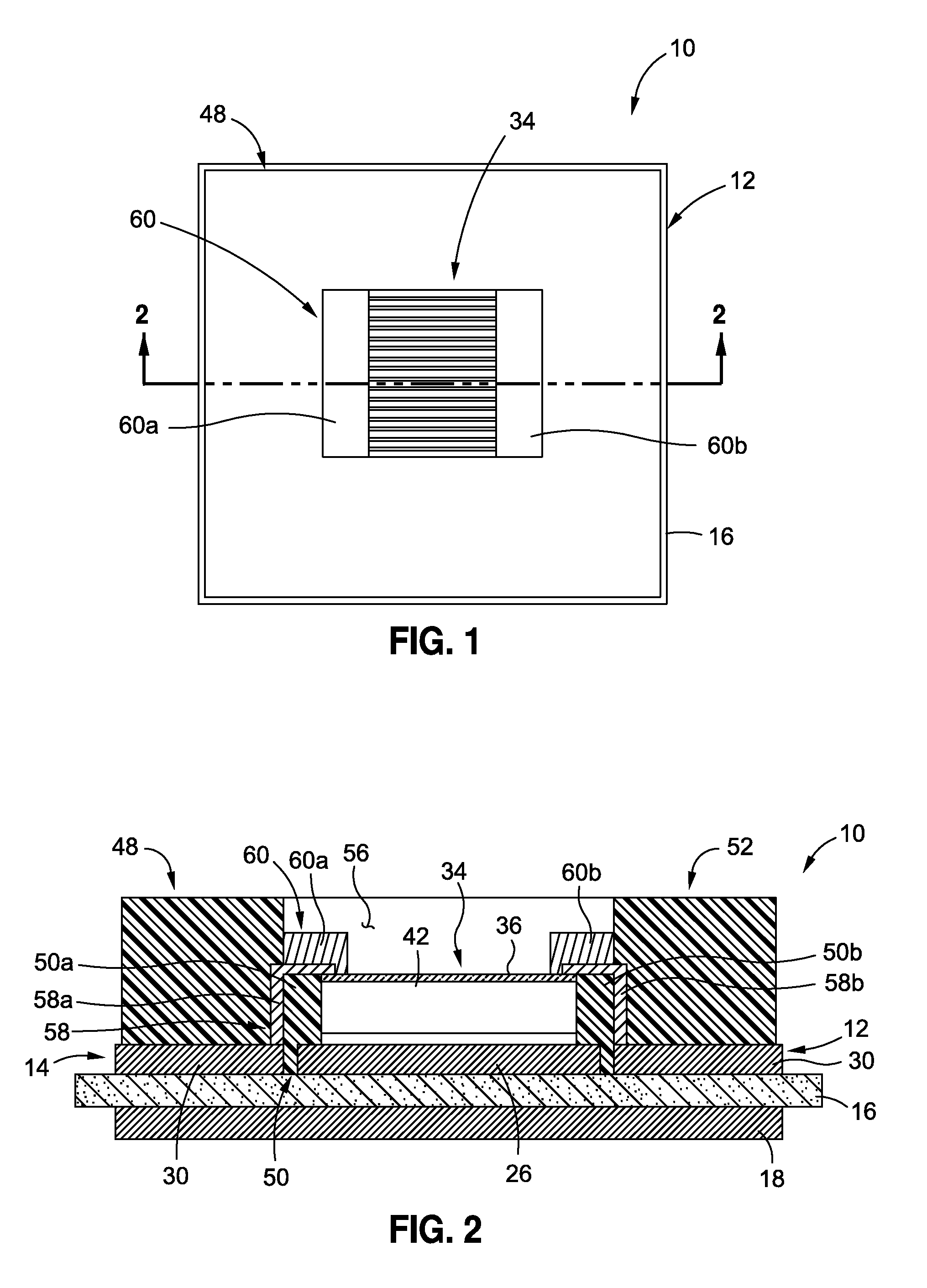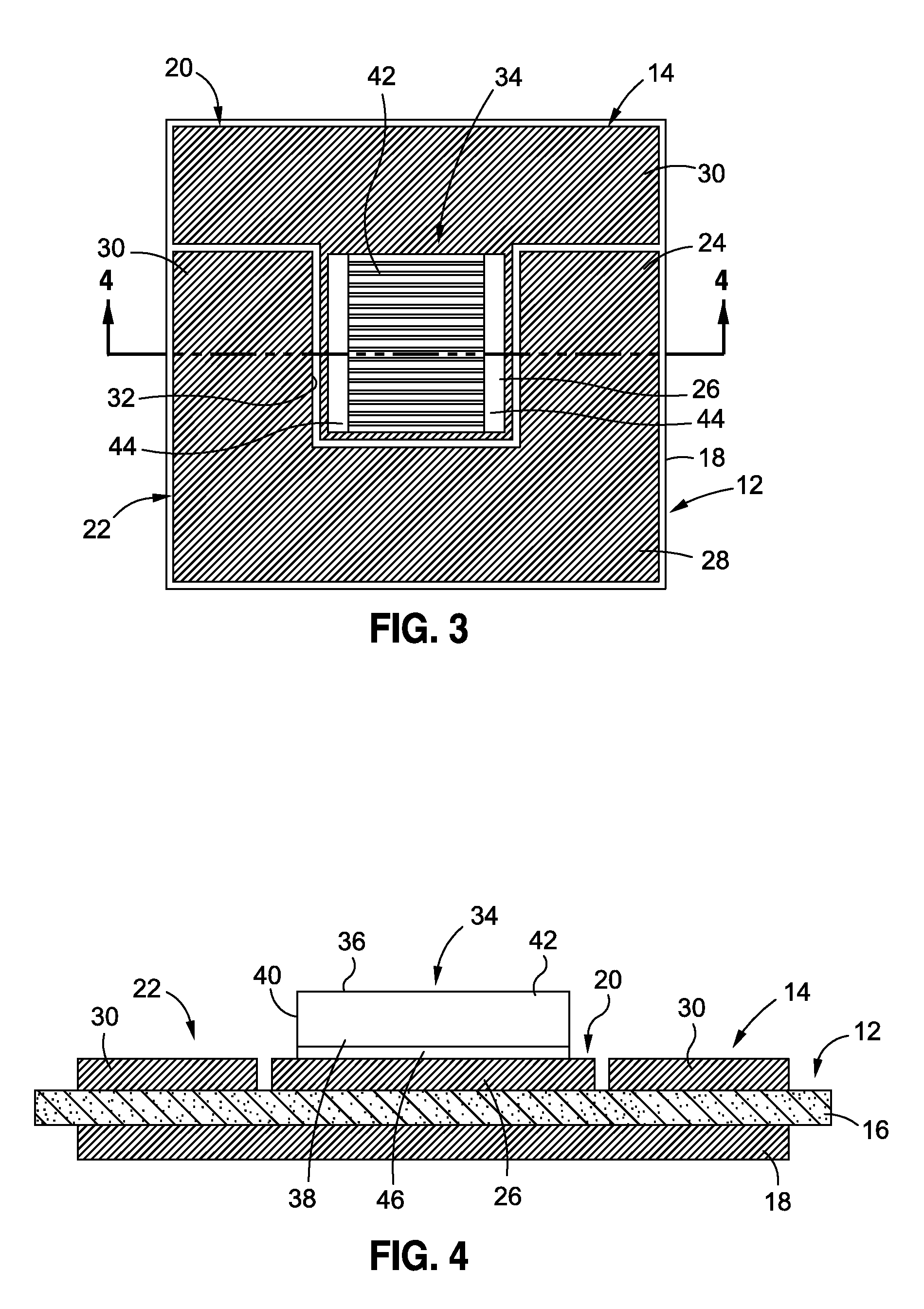Conductive paste and mold for electrical connection of photovoltaic die to substrate
- Summary
- Abstract
- Description
- Claims
- Application Information
AI Technical Summary
Benefits of technology
Problems solved by technology
Method used
Image
Examples
Embodiment Construction
[0021]Referring now to the drawings wherein the showings are for purposes of illustrating a preferred embodiment of the present invention only, and not for purposes of limiting the same, FIGS. 1-8 depict a concentrated photovoltaic (CPV) package or module 10 constructed in accordance with the present invention. In FIGS. 1 and 2, the CPV module 10 is depicted in its fully fabricated state. In FIGS. 3-8, the CPV module 10 is depicted in partially completed states of fabrication, with an initial fabrication stage being shown in FIGS. 3 and 4, an intermediate fabrication stage being shown in FIGS. 5 and 6, and an intermediate fabrication stage just prior to completion being shown in FIGS. 7 and 8.
[0022]As is most easily seen in FIGS. 3 and 4, the CPV module 10 comprises a substrate 12 which has a generally quadrangular (e.g., square) configuration. When viewed from the perspective shown in FIG. 4, the substrate 12 comprises a first (top) layer 14 which is preferably fabricated from copp...
PUM
 Login to view more
Login to view more Abstract
Description
Claims
Application Information
 Login to view more
Login to view more - R&D Engineer
- R&D Manager
- IP Professional
- Industry Leading Data Capabilities
- Powerful AI technology
- Patent DNA Extraction
Browse by: Latest US Patents, China's latest patents, Technical Efficacy Thesaurus, Application Domain, Technology Topic.
© 2024 PatSnap. All rights reserved.Legal|Privacy policy|Modern Slavery Act Transparency Statement|Sitemap



